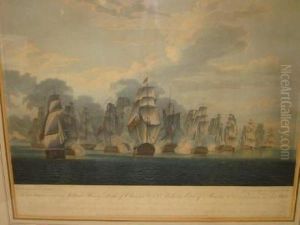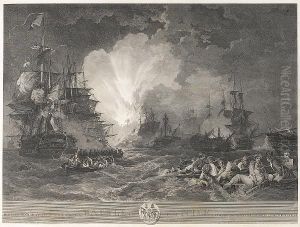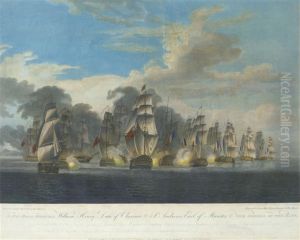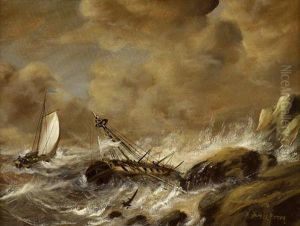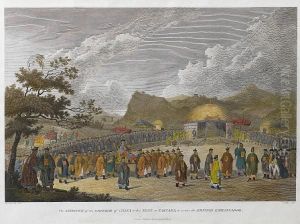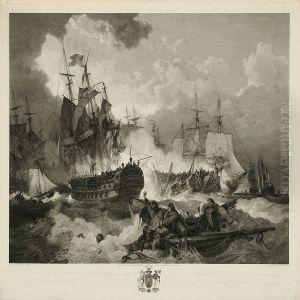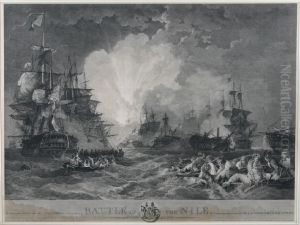James Fittler Paintings
James Fittler was a distinguished British engraver, born in 1758 in London. His contributions to the art world spanned across the late 18th and early 19th centuries, marking a period of significant evolution in engraving techniques and aesthetic appreciation. Fittler demonstrated an early aptitude for the arts, which led him to apprentice under the notable engraver William Sherwin. This foundational period was crucial in developing his skill set and establishing his path in the competitive sphere of engraving.
Fittler's career is noted for its diversity in subjects and engraving styles. He was adept at both line engravings and aquatints, a technique that became increasingly popular during his lifetime. His works included illustrations for books, portraits, landscapes, and maritime scenes, reflecting the broad interests of the Georgian public. Fittler's contributions to book illustrations are particularly noteworthy, with his engravings appearing in prestigious publications such as James Cook's 'A Voyage to the Pacific Ocean' and the 'Naval Chronicle'. These works not only highlight his technical skill but also his ability to capture the spirit of exploration and discovery that characterized the era.
In 1793, Fittler was appointed Engraver to the King, a significant honor that recognized his mastery and contribution to British art. This position allowed him to work on several important projects, including works for the royal family and other notable figures of the time. Despite the prestige of such a role, Fittler remained engaged with the wider artistic community, contributing to the development of the engraving field and mentoring younger artists.
Fittler's legacy is preserved in the collections of major institutions, including the British Museum and the National Portrait Gallery, where his engravings continue to be studied and appreciated. His death in 1835 marked the end of an era for British engraving, but his influence persisted, inspiring future generations of artists to explore and innovate within the medium. Fittler's work remains a testament to the richness of British engraving and its capacity to capture and convey the complexities of human and natural beauty.
